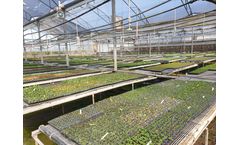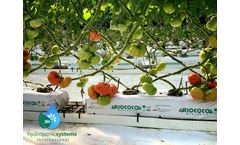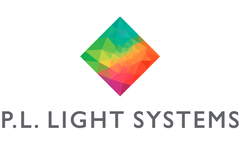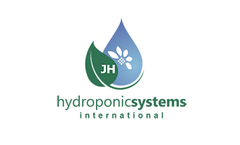Greenhouse Crop Articles & Analysis
11 articles found
A greenhouse organic tomato and cucumber grower saved his crop during extreme drought with Sensoterra sensors, and improved yield with soil moisture data. With extreme droughts occuring more frequently, Danny Monté, Forecast and Quality Administration and Quality Control Manager at AC Hartman BV, relies on Sensoterra soil moisture sensors to support ...
Studies have shown that the temperature of the root zone is more critical for crop growth than for leaves. What are the benefits of AGRIMAT? If you ask the experts in the field they will tell you three significant benefits: Faster growth, better quality crop and energy savings. ...
The comparison of the amount of water needed to produce a kilo of tomatoes in greenhouse cultivation systems without hydroponics and high-tech greenhouse cultivation with hydroponics yield… A series of differences: Greenhouse tomato cultivation without hydroponics: 30 liters per kilo of tomato. Hydroponic cultivation ...
What is the difference between Red/Blue vs. Broad “Full” Spectrum LEDs? Growers generally have two options when it comes to horticultural LED spectrums – “full spectrum” or “broad-spectrum”, which appears as white light; and “red/blue spectrum”, which can appear as purple or pink light. The red/blue spectrum LED luminaires are often referred ...
The main problem of these diseases is that there is no effective control of them through chemical treatments, so once the disease takes place it causes severe damage to the crop, reducing production and quality. The most effective way to avoid the negative impact of this type of disease on our crop is through preventive measures, such as preventing the disease ...
The main problem of these diseases is that there is no effective control of them through chemical treatments, so once the disease takes place it causes severe damage to the crop, reducing production and quality. The most effective way to avoid the negative impact of this type of disease on our crop is through preventive measures, such as preventing the disease ...
Estimating water requirements of plants cultivated in greenhouse environments is crucial, both for the design of greenhouse irrigation systems and the improvement of irrigation scheduling. ...
In order to assure high quality and high yields, free of diseases, which is ready for the market on schedule -Mr. Mizrcahi grows his crop in greenhouse that are being monitored and controlled using AGROAMITEC Climate Control which was developed in co-operation with Volcani Center ARO - Agricultural Research Organization (the Israeli Ministry of Agriculture) The ...
Now to hear from the expert himself! What are the best crops to grow in a greenhouse? Theo: As a greenhouse operator you choose crops that are in demand, crops that grow well in your climate conditions, crops that do well in your greenhouse facilities. ...
The performance and suitability of tertiary treated wastewater (TW) and/or fertigation (F) in pepper plants were studied over a 4-month period in greenhouse conditions. Four treatments were used consisting of (1) water, (2) water + F, (3) TW, and (4) TW + F. The F and/or TW application increased plant height and plant biomass compared with the control plants (irrigated with water) ...
Crop evapotranspiration is the most important parameter for management of irrigation systems in greenhouses. ...









